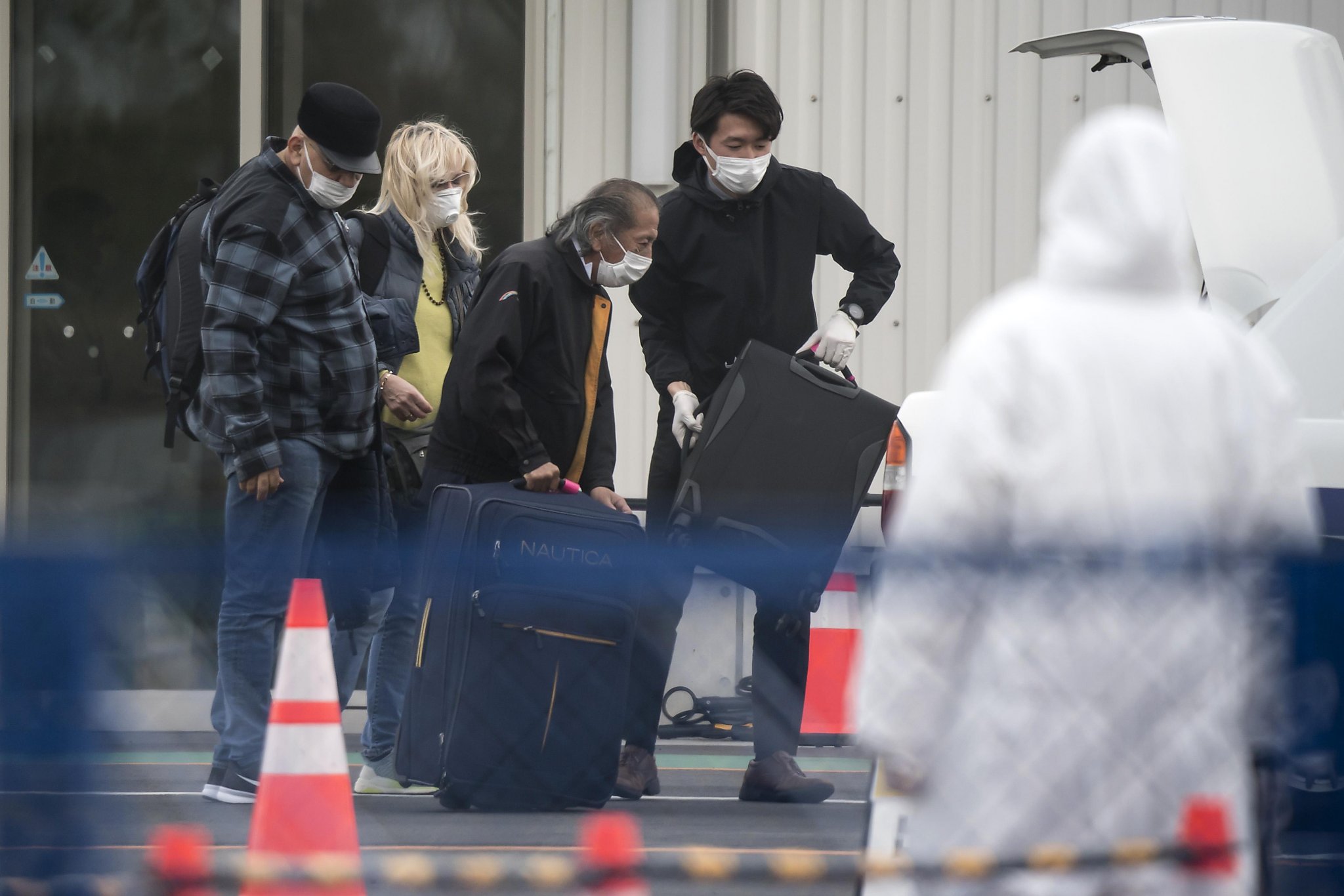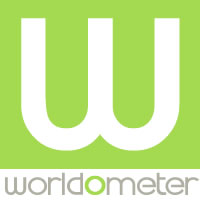- Forums
- Community Announcements & Discussion
- Archive Forum
- Coronavirus (COVID-19)
- Travel Bans & Restrictions
You are using an out of date browser. It may not display this or other websites correctly.
You should upgrade or use an alternative browser.
You should upgrade or use an alternative browser.
COVID-19 in Japan and Japanese waters
- Thread starter trevella
- Start date
-
- Tags
- covid-19 travel health
disruptivedolphin
Member
- Joined
- Feb 18, 2020
- Posts
- 103
Thanks for your "continuing" input DD….
No real need to take a dig at anyone who's decided they won't or can no longer contribute. Lots of stress among the people at embassies and the like as they worry about their citizens in Japan and South Korea and then themselves personally...
disruptivedolphin
Member
- Joined
- Feb 18, 2020
- Posts
- 103
52 new South Korean cases announced this morning.
disruptivedolphin
Member
- Joined
- Feb 18, 2020
- Posts
- 103
Japan's Foreign Minister said at a press conference this morning that nine countries have asked their citizens to limit travel to Japan: Federated States of Micronesia, Tonga, Samoa, Israel, Kiribati, Solomon Islands, South Korea, Thailand, and Bhutan.
disruptivedolphin
Member
- Joined
- Feb 18, 2020
- Posts
- 103
Three more positives in Hokkaido, including two people under 20.
moa999
Enthusiast
- Joined
- Jun 23, 2003
- Posts
- 13,628
Pretty offensive characterisation in my opinion...
Government officials were in charge,
Equally offensive to the the government officials.
Do you think it was solely bureaucrats in charge with zero medical training and no input from other infectious disease experts making decisions. Japan is a big country and I'd expect they would have multiple possible experts in this field.
Remember this is a large number of people.
Had this ship arrived at any Australian port we equally wouldn't have had room in hospitals, immigrations facilities, accommodation camps or even hotels to establish a clean quarantine zone, and I suspect the only solution would have been cabin confinement.
Now I do think the Japanese did make some mistakes
- not establishing confinement earlier (passengers were still able to move for two days after it was first discovered)
- being slow to ramp up testing
- not switching to external food earlier (only happened day 10 or so) given risk of kitchen staff having it
- possibly not fully cleaning public areas or wearing appropriate protection given a number of Japanese health officials have contracted the virus - they should have been assuming every surface, every person on board possibly had the virus.
Last edited:
Tropic
Active Member
- Joined
- Jan 29, 2017
- Posts
- 580
No need to apologise tgh. Frankly I think a few posters in this thread are being a bit oversensitive and precious. Everyone has right to an opinion and to express that opinion, right or wrong, as long as it's not abusive. That is the purpose of this community. Noone I see here is an expert on these issues or is the only one circulating the information from the multitude of publically available sources. Just my opinion.
Himeno
Senior Member
- Joined
- Jun 15, 2011
- Posts
- 5,716
It depends what is needed to establish a "clean quarantine zone". In this case, there are a number of large hotels and a convention center (Pacifico Yokohama) in close proximity to the Yokohama Port Cruise pier. Would using the Pacifico Yokohama exhibition halls as a quarantine center been different to locking everyone in their cruise cabins?Remember this is a large number of people.
Had this ship arrived at any Australian port we equally wouldn't have had room in hospitals, immigrations facilities, accommodation camps or even hotels to establish a clean quarantine zone, and I suspect the only solution would have been cabin confinement.
Now I do think the Japanese did make some mistakes
- not establishing confinement earlier (passengers were still able to move for two days after it was first discovered)
- being slow to ramp up testing
- not switching to external food earlier (only happened day 10 or so) given risk of kitchen staff having it
- possibly not fully cleaning public areas or wearing appropriate protection given a number of Japanese health officials have contracted the virus - they should have been assuming every surface, every person on board possibly had the virus.
moa999
Enthusiast
- Joined
- Jun 23, 2003
- Posts
- 13,628
Reports from Japan that the quarantine mostly worked according to data

 www.japantimes.co.jp
www.japantimes.co.jp
Also seen some reference on paywalled links that the US State Dept overruled the US CDC on whether to transport the 14 passengers whose positive results came whilst they were on buses to the plane.
Meanwhile further US evacuees have tested positive (presumably negative whilst onboard)

 www.sfchronicle.com
www.sfchronicle.com

COVID-19 spread on Diamond Princess before quarantine, report suggests
Transmission toward the end of the quarantine period occurred mostly among crew or within passenger cabins, the report also said.
Also seen some reference on paywalled links that the US State Dept overruled the US CDC on whether to transport the 14 passengers whose positive results came whilst they were on buses to the plane.
Meanwhile further US evacuees have tested positive (presumably negative whilst onboard)

Coronavirus: 22 more cruise evacuees, including 16 in Bay Area, sent to hospitals
Sixteen more people at Travis Air Force Base who had been on the Diamond Princess cruise...
zenyattamondatta
Member
- Joined
- Jul 22, 2018
- Posts
- 430
Equally offensive to the the government officials.
Do you think it was solely bureaucrats in charge with zero medical training and no input from other infectious disease experts making decisions. Japan is a big country and I'd expect they would have multiple possible experts in this field.
Siding with the government officials seems like an interesting choice given that you obviously have so little understanding of what's going on.
In the last couple of hours those government officials have announced that
(1) Whoops, we let 23 people off the boat without testing them properly. But hey, we've been able to get in touch with most of them
(2) Whoops, a lady we let off on the 19th who tested negative on the 15th has today tested positive
(3) Whoops, 41 Health Ministry workers just went back to work without being tested after boarding the Diamond Princess, but we've realized now that it might be a good idea to test them
zenyattamondatta
Member
- Joined
- Jul 22, 2018
- Posts
- 430
And on a more positive note, let me take this opportunity to thank the many people at the Australian Embassy who handled the logistics of the evacuation flight so brilliantly and who continue to look after the roughly 60 Aussie Diamond Princess passengers who have had to stay behind in Tokyo and thereabouts.
- Joined
- Jan 26, 2011
- Posts
- 30,189
- Qantas
- Platinum
- Virgin
- Red
Read our AFF credit card guides and start earning more points now.
AFF Supporters can remove this and all advertisements
disruptivedolphin
Member
- Joined
- Feb 18, 2020
- Posts
- 103
As of Wednesday's close, so basically after six more days worth of releases, the figures are now
621 Diamond Princess passengers and crew
3 government workers
14 charter
69 'others'
25 in Tokyo, 12 in Wakayama, 7 in Aichi.
After four more days:
691 Diamond Princess passengers and crew
5 government workers
14 charter
133 'others'
29 in Tokyo, 26 in Hokkaido, 17 in Aichi, 16 in Kanagawa, 13 in Wakayama, 10 in Chiba.
17 in Hokkaido over the past two days, and the total includes links to the snow festival, the skiing area of Furano, at least one school, and at least one hospital. Very wide geographical spread. A female in her 20s is in critical condition. A trip to Hokkaido is also believed responsible for cases down in Kyushu.
DFAT last evening altered its advice for Japan from "Exercise normal safety precautions" to "Exercise a high degree of caution".
disruptivedolphin
Member
- Joined
- Feb 18, 2020
- Posts
- 103
Yesterday also saw the third death of someone from the Diamond Princess. Ministry of Health won't disclose whether it was a passenger or a crew member, but I'm guessing the former since it was a Japanese male in his 80s.
Yesterday's 57 new Diamond Princess infections broke down into 2 passengers and 55 crew. Still crew members remaining to be tested.
Third day of a long weekend today, which appears to be affecting news flows to some degree. Japan is likely to alter its travel advice for South Korea today or tomorrow.
Yesterday's 57 new Diamond Princess infections broke down into 2 passengers and 55 crew. Still crew members remaining to be tested.
Third day of a long weekend today, which appears to be affecting news flows to some degree. Japan is likely to alter its travel advice for South Korea today or tomorrow.
moa999
Enthusiast
- Joined
- Jun 23, 2003
- Posts
- 13,628
Yesterday's 57 new Diamond Princess infections broke down into 2 passengers and 55 crew. Still crew members remaining to be tested.
Wonder how many were kitchen staff or food delivery staff during the 'isolation'
- Joined
- Jan 26, 2011
- Posts
- 30,189
- Qantas
- Platinum
- Virgin
- Red
I'm trying to rationalise the age of many of the people who have succumbed to this illness. And if through pneumonia then that is a frequent cause of death anyway amongst this age group. The lady in Italy was also in her '80s and a cancer sufferer. Is there an age breakdown that you know of? Not just for Japan but generally?Yesterday also saw the third death of someone from the Diamond Princess. Ministry of Health won't disclose whether it was a passenger or a crew member, but I'm guessing the former since it was a Japanese male in his 80s.
Yesterday's 57 new Diamond Princess infections broke down into 2 passengers and 55 crew. Still crew members remaining to be tested.
Third day of a long weekend today, which appears to be affecting news flows to some degree. Japan is likely to alter its travel advice for South Korea today or tomorrow.
Edit, just found this - I think it is just for China?

Coronavirus Age, Sex, Demographics (COVID-19) - Worldometer
Age, sex, demographic characteristics such as pre-existing conditions, of coronavirus cases of patients infected with COVID-19 and deaths, as observed in studies on the virus outbreak originating from Wuhan, China
*Death Rate = (number of deaths / number of cases) = probability of dying if infected by the virus (%). This probability differs depending on the age group. The percentage shown below does NOT represent in any way the share of deaths by age group. Rather, it represents, for a person in a given age group, the risk of dying if infected with COVID-19.
AGE | DEATH RATE* |
80+ years old | 14.8% |
70-79 years old | 8.0% |
60-69 years old | 3.6% |
50-59 years old | 1.3% |
40-49 years old | 0.4% |
30-39 years old | 0.2% |
lovetravellingoz
Enthusiast
- Joined
- Jul 13, 2006
- Posts
- 12,743
DEATH RATE*
Personally I think that table will not be accurate (with the actual death rate much lower) as large numbers of Covid-19 positive people simply are not included with the the official cases, whereas many, if not most deaths will be, as treatment will have been sought or the death investigated.
- Joined
- Jan 26, 2011
- Posts
- 30,189
- Qantas
- Platinum
- Virgin
- Red
Agree with that comment too but the above table is about probability - so older people who may contract the virus have a greater chance (14.8%) of dying from it.Personally I think that table will not be accurate (with the actual death rate much lower) as large numbers of Covid-19 positive people simply are not included with the the official cases, whereas many, if not most deaths will be, as treatment will have been sought or the death investigated.
Become an AFF member!
Join Australian Frequent Flyer (AFF) for free and unlock insider tips, exclusive deals, and global meetups with 65,000+ frequent flyers.AFF members can also access our Frequent Flyer Training courses, and upgrade to Fast-track your way to expert traveller status and unlock even more exclusive discounts!

AFF forum abbreviations
Wondering about Y, J or any of the other abbreviations used on our forum?Check out our guide to common AFF acronyms & abbreviations.
Recent Posts
-
-
Questions on adding infant to MH tix redeemed via Qantas
- Latest: Quickstatus
-
Currently Active Users
- There'sOnlyOneJimmy
- Wingco
- utaussiefan
- kearvaigskewer
- cityfan
- marquisite
- RooFlyer
- chitown_boy
- YosemiteP
- Quickstatus
- MEL_Traveller
- Staph
- hill
- opusman
- blacksultan
- kamb1ng
- buggy00
- Hunter4vr
- ALEX LANGTON
- Docfritz
- JohnGlav
- tim84
- sudoer
- MalevFan69
- ShelleyB
- Mort
- mokuni
- year of the roo
- Pvcmenace
- Beer_budget
- Doug_Westcott
- prelude
- Bundy Bear
- stevenaus
- Bolthead
- Duggo
- gluewell14
- Junior royal
- Poojou
- qfflyer
- sihyonkim
- Matt_H
- Tlee
- kevrosmith
- Falcs
- bits
- Stone
- TMP
- 306
- gty222
Total: 1,319 (members: 70, guests: 1,249)














